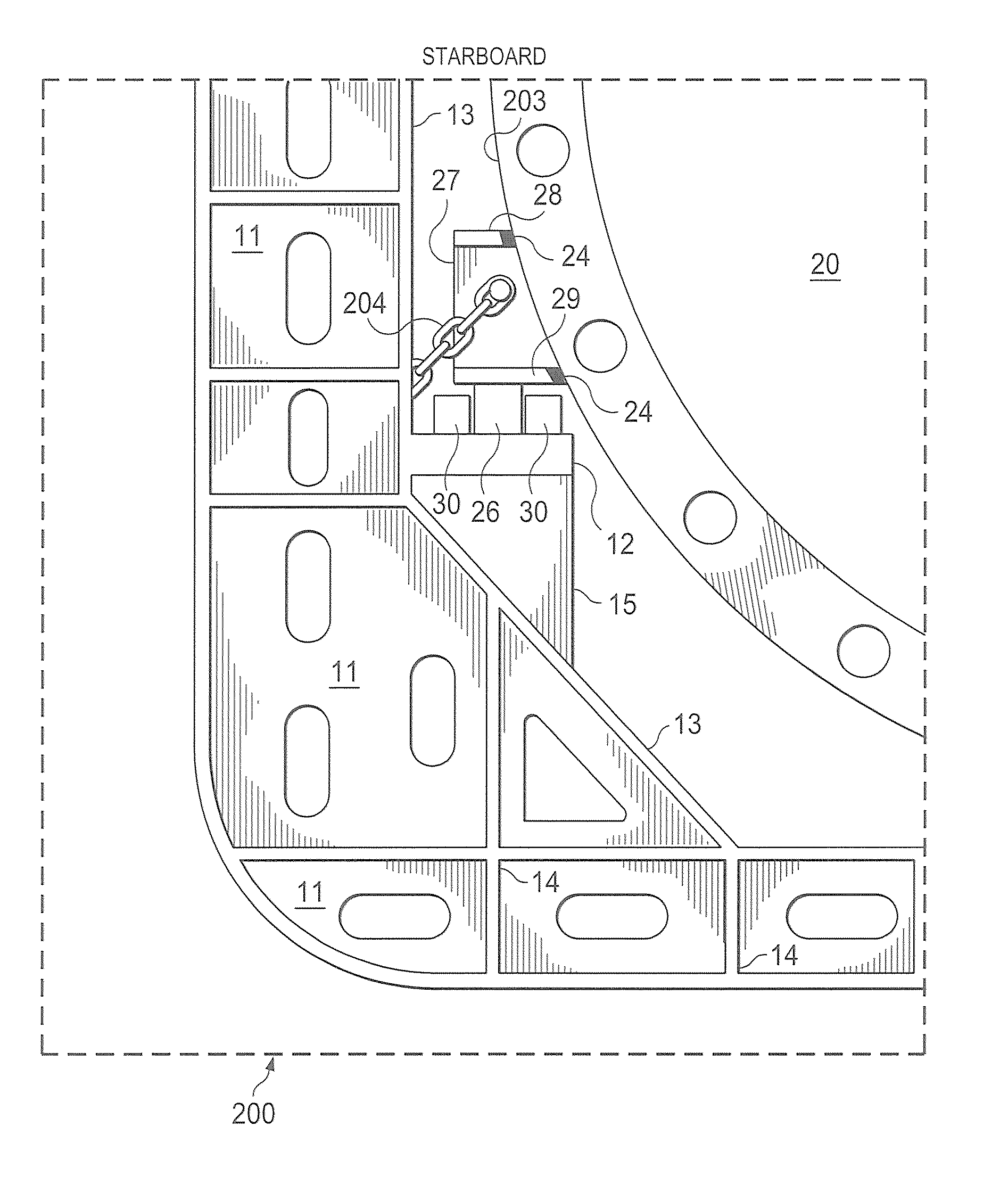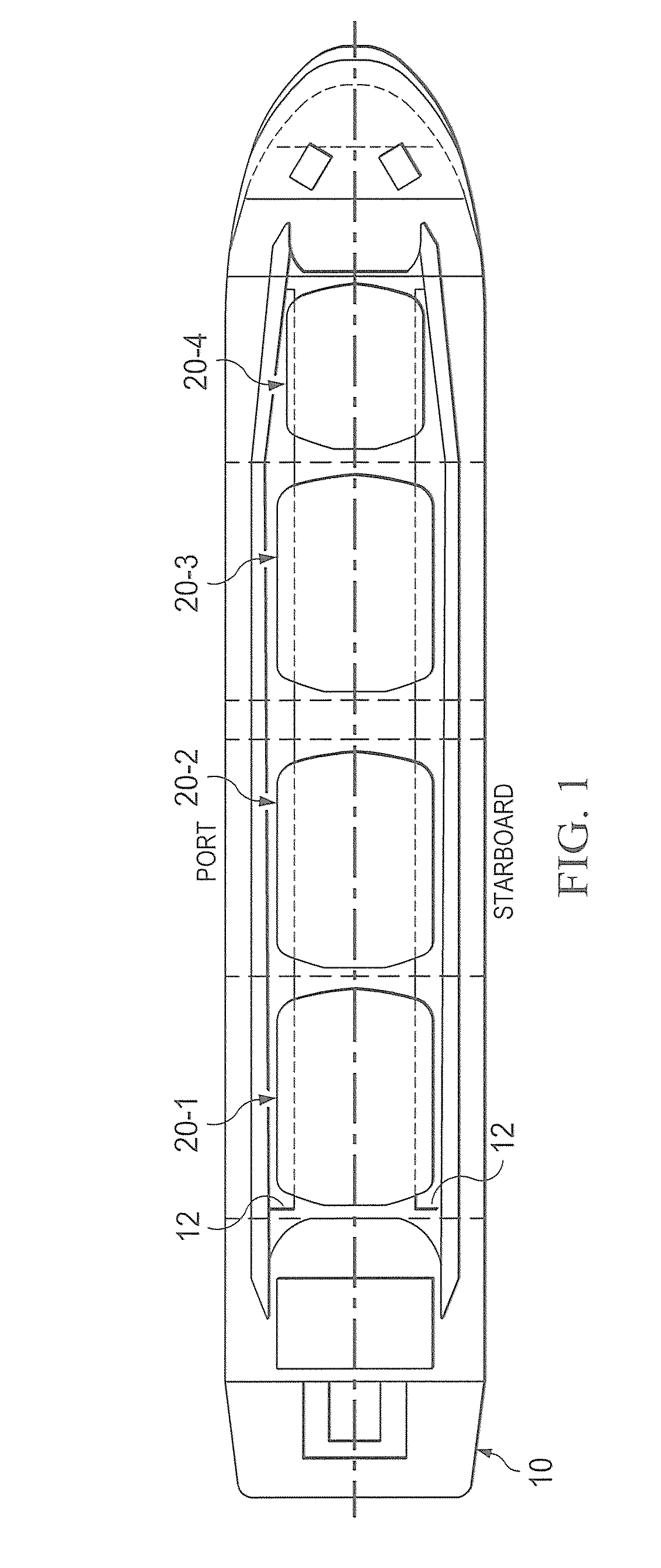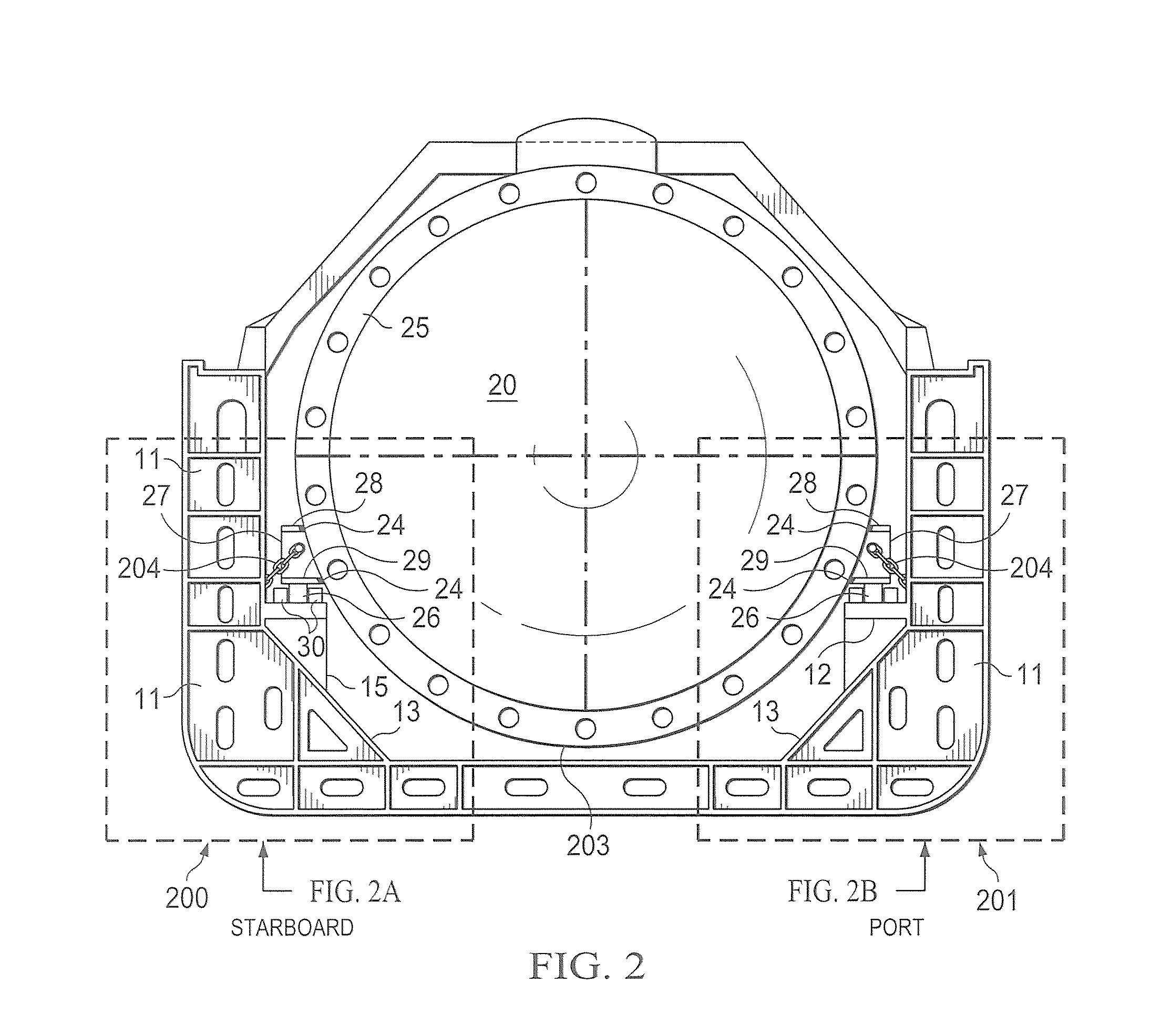Systems and methods for supporting tanks in a cargo ship
a technology for supporting tanks and cargo ships, applied in the direction of hull reinforcements, floating buildings, containers, etc., can solve the problems of limited diameter and length of such tanks, limited number of support points, and interaction between tanks and hulls, so as to reduce friction between pedestals
- Summary
- Abstract
- Description
- Claims
- Application Information
AI Technical Summary
Benefits of technology
Problems solved by technology
Method used
Image
Examples
case c
[0042]In case c) one set of stops may be arranged for the inboard stop to be in contact with the pedestal in the “cold” tank condition and the outboard stop having contact with the pedestal in the “warm” tank condition, i.e., the stops are spaced so that the tank can expand and contract through thermal cycles without binding in the transverse stops. In another configuration, the just mentioned outboard transverse stop may be adjusted after the tank is cold to minimize the gap between pedestal and stop.
[0043]The ideal transverse stop design solution depends on numerous variables and may be different for each ship design depending on hull structure, tank size, liquefied gas density, pressure, etc.
[0044]The longitudinal position is controlled by longitudinal stops 41, FIG. 4, which can be placed on the port and starboard side of the tank, as shown. The stops act on pedestals fixed to lower girder 29 and sized to accommodate the longitudinal loads in both the forward and aft direction. ...
PUM
 Login to View More
Login to View More Abstract
Description
Claims
Application Information
 Login to View More
Login to View More - R&D
- Intellectual Property
- Life Sciences
- Materials
- Tech Scout
- Unparalleled Data Quality
- Higher Quality Content
- 60% Fewer Hallucinations
Browse by: Latest US Patents, China's latest patents, Technical Efficacy Thesaurus, Application Domain, Technology Topic, Popular Technical Reports.
© 2025 PatSnap. All rights reserved.Legal|Privacy policy|Modern Slavery Act Transparency Statement|Sitemap|About US| Contact US: help@patsnap.com



